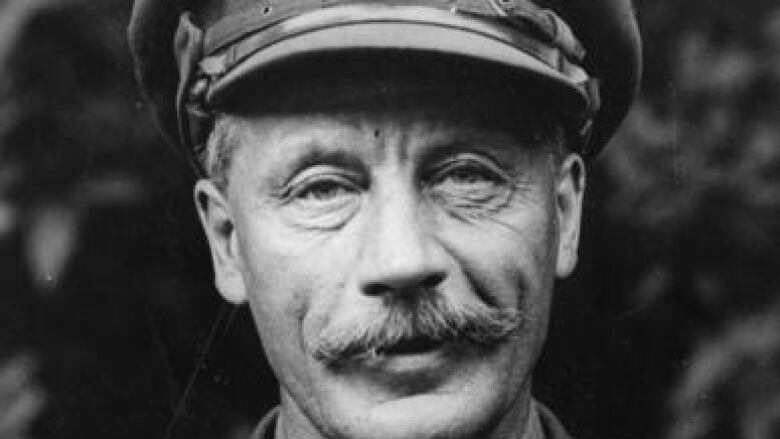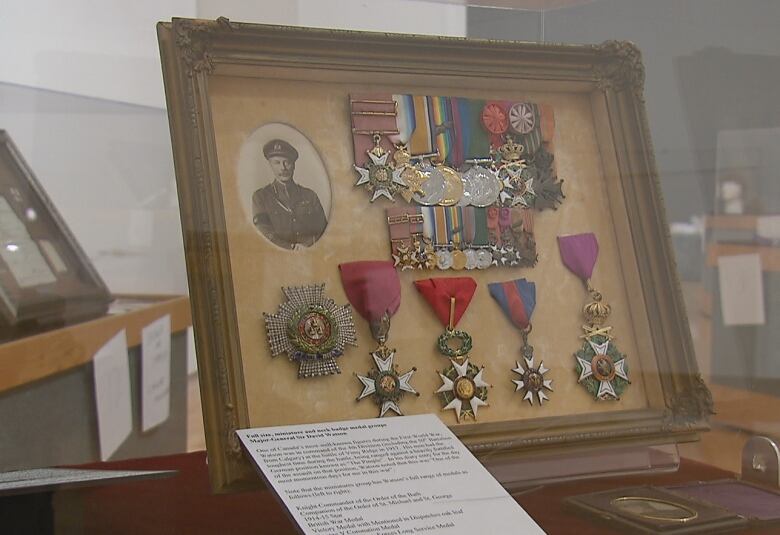Commander's journals capture 'momentous' day for Canadians on Vimy Ridge
'The bombardment was something horrific,' Maj.-Gen. David Watson wrote in 1917

Even as he was leading the 4th CanadianDivision intobattle on Vimy Ridge, Maj.-Gen. David Watsonknew it was different than thebattles he had already commanded.
"Monday, April 9th," he wrote inhisleather-bound journal."One of the most momentous days in Canadian history."
Watson's sometimes difficult to decipher cursive writing can be seen in an upcoming exhibit at The Military Museums in Calgary.
The exhibit commemorates several key First World War battles, including Vimy, Hill 70 and Passchendaele, with a focus on telling the story as seen by those who took part in the clashes 100 years ago.
Six volumes ofWatson's diaries, which document much more than theeffortto take the ridge in northern France,have beendigitizedin the basement archives of the Calgary museum.
"Watson realizes that history is unfolding," Rory Cory, senior curator of the Military Museums, says of the journals. Watson had been through the battle of the Somme the previous year, Cory says, and "there aren't any notations like that."
"They realized the British weren't able to take Vimy Ridge previously, whereas the Canadians were. So here's the colonial nation now able to outshine the home nation."

The Germans took theridge in northern France early in the war, building trenches and fortifying their position. The Canadian Corps effort to take it backbegan in the early morning hours on April 9, 1917.
Excerpts from Watson's journal detail thepush to take the seven-kilometre long ridge.
- 360 VIDEO | Explore the tunnels and trenches of Vimy Ridge
"The 4th Canadian division occupied the left flank of the first attack and we had to take Vimy Ridge and Hill 145," he wrote of his division, one of four Canadian divisions pushing forward that day."The bombardment was something horrific."
The 4th Division captured 200 German prisoners that day and killed a "great many" soldiers, Watson wrote."Had a very hard day of it." Still, he called the day the "biggest first day's show of the War."
'Here is the moment'
"You're sort of touching history," saysJason Nisenson, an archivist with the University of Calgary's library and archives, who personally scanned and read some of the 100-year old pages."Here it is, right here is the moment. So it has that capacity to put you in touch in a very sort of tangible and human way I think with history."

Watson was born in 1869 in Quebec City.He became a journalistand manager at the QuebecMorning Chronicle. He also enrolled as a private in a Quebec militia, the 8th Royal Regiment, rising through the ranks to its command.
With the threat of the First World War looming, Watson, then45 years old, enlisted with the Canadian Expeditionary Force.Over the course of the war, Watson was involved in many of the major battles;Ypres, Passchendaeleand Cambrai among them.
It's a history Watson's family wanted preserved.
Before he died, Watson'sgrandson David Watson Evans gave the collection to his own son, Bill Evans, with a caveat."He said I would like to give this to you, but with the understanding that it's going to find its way into a Canadian collection and we want it donated."

Calgary architect and real estate developer Bill Evans sayshis father feared it would end up forgotten in a basement or, worse yet, sold on the internet.
So, the pair approached the Canadian War Museum and the Military Museums in Calgary.
"I think the museum in Calgary wanted it more," Evans says.
It's a bonus that the collection will be close enough for Watson'sdescendants, who live in Calgary, to be able to visit their cherished family heirlooms.
- Calgary man plays flute carved from Vimy oaks to commemorate historic WWI battle
- Soldiers, police and parks staff hike up mountain to reach Canada's Vimy Ridge
Thecollection includesthe many medals and citations Watson was awarded.
Watson returned to Quebec in 1919, heading back to his roots in journalism and the Quebec Chronicle.
Butthe war had taken its toll.
"He was in his 40's but he was pretty much completely grey, and you know he used a cane and he had respiratory issues,"Cory, senior curator of the Military Museums says." I think all those losses emotionally affected him and then affected his health as well."
According to family lore, Watson was suffering fromthe after effects of gas and chemical weaponsused in the First World War.
Watson died just three years after returning to Canada at the age of 53.













_(720p).jpg)


 OFFICIAL HD MUSIC VIDEO.jpg)
.jpg)



























































































